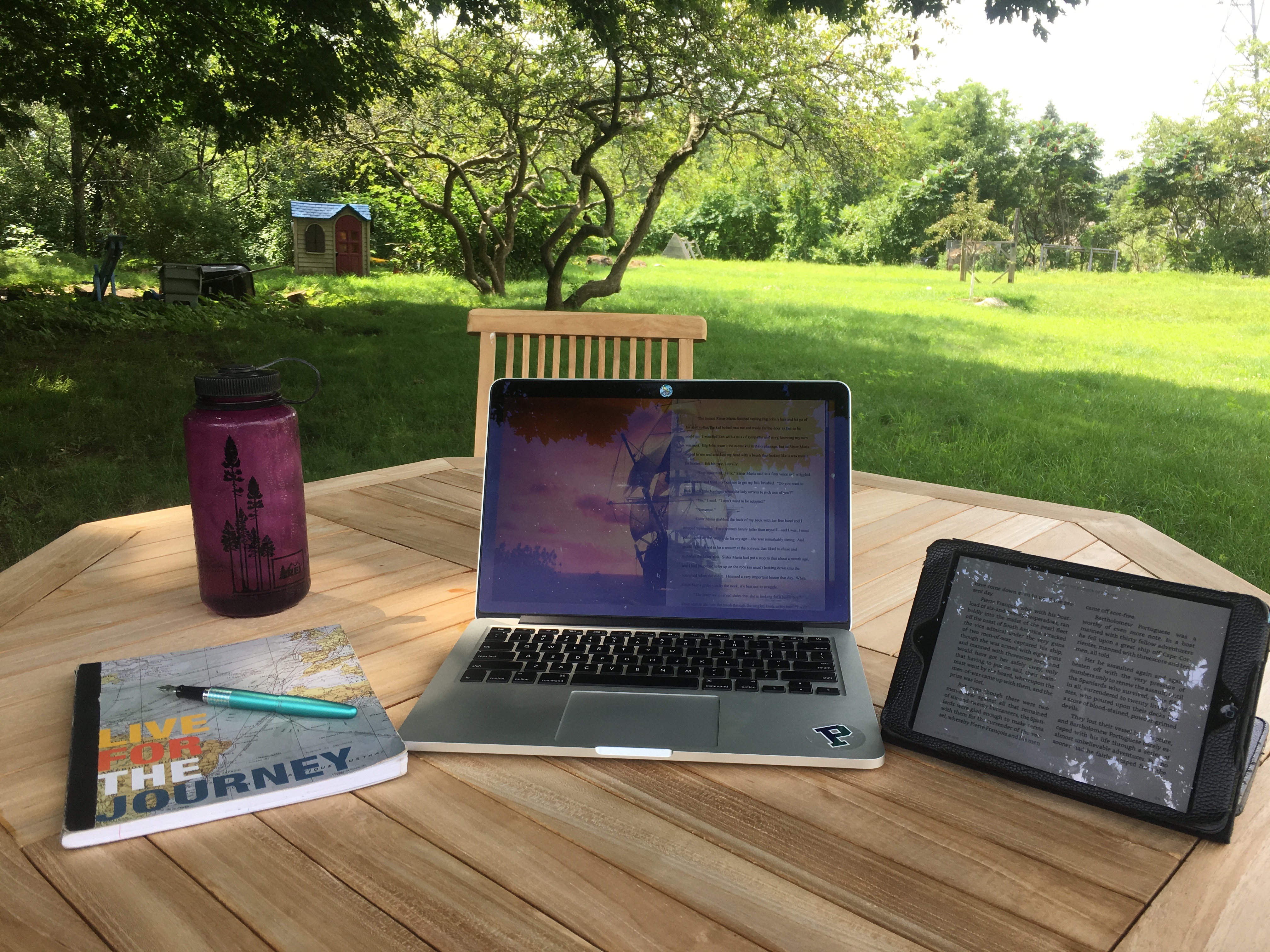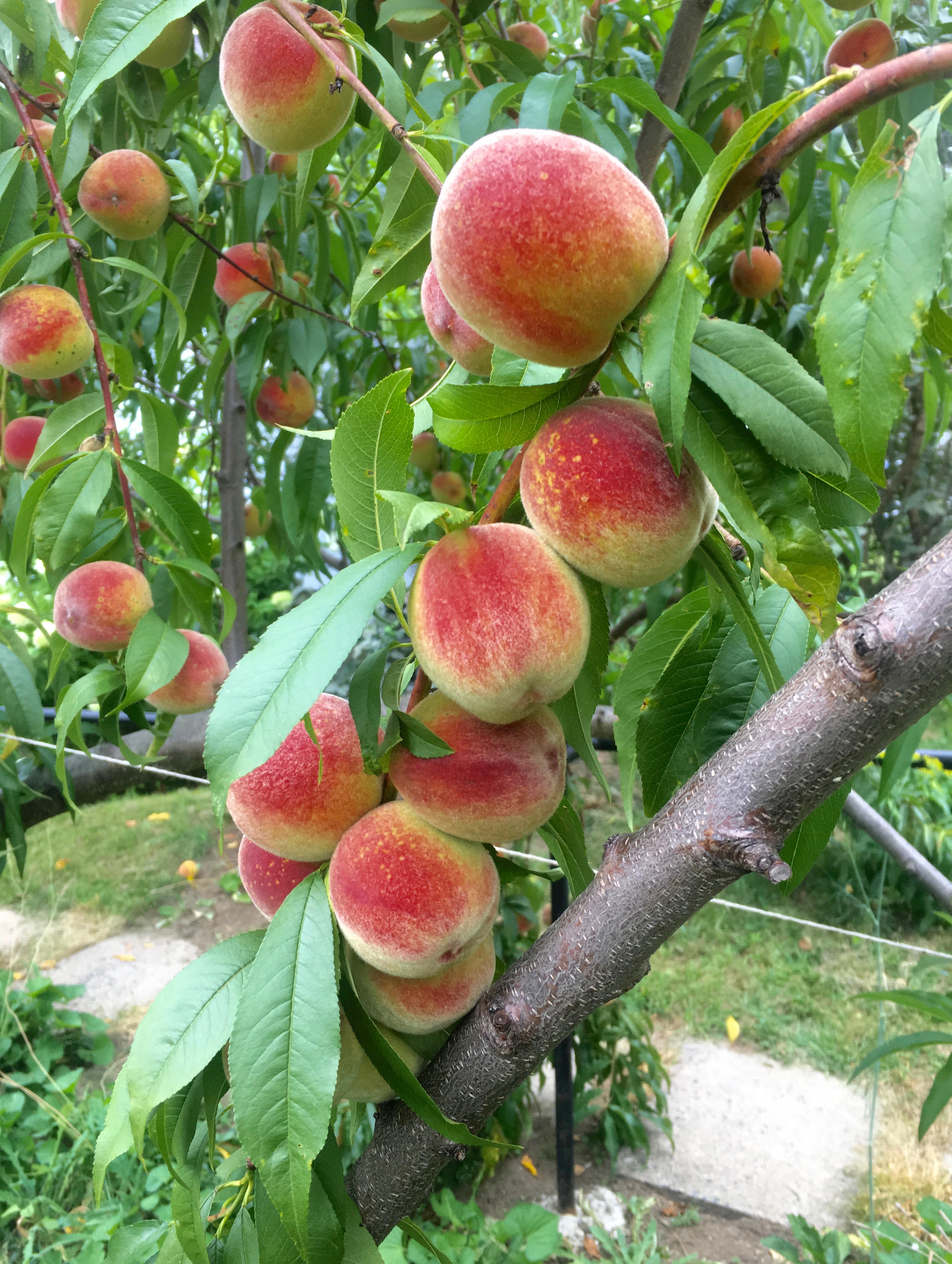A couple of weeks ago, I took part in a panel discussion during Lesley University’s 2020 Creative Writing MFA winter residency. The topic: “Writing in a Time of Climate Anxiety.” Joining me on the panel was author and photographer Tony Eprile, children’s author Tracey Baptiste, and poet and environmental activist Andrea Read.
What Was on Everyone’s Mind?
Tony shared some of his gorgeous photographs of wild places, green spaces, and rare species. He opened up about his fear that the next generation will grow up having no knowledge that these species and places ever existed. What kind of psychological and social impact will losing our green spaces have on our children, he asked?
Tracy talked about how she dealt with the theme of climate change and loss of habitat and home in the third book of her Jumbies series. She revealed that sea-level rise is predicted to eat up her childhood home of Trinidad. The island is going to vanish beneath the waves, where it might become mythologized like Atlantis in the minds of future generations. Who will she be, Tracey wondered, without her home?
Andrea spoke about her experience purchasing 500 acres of clear cut land in Maine. She (and others) planted thousands of hardwood saplings on the site to restore the native habitat. The farmhouse and barn on the property sat atop a plot of land whose topsoil had been stripped off and sold. Andrea and her husband used permaculture techniques to bring it back to a lush and productive garden in a single season. She then co-founded an art and nature nonprofit called the Newforest Institute (no longer in operation).
I focused on the power of writers (and all creative artists) to inspire the imaginations of the general public. I pointed out that, when it comes to writing about climate change, we have generally failed to do our jobs well. For decades, there has been a collective failure of the imagination. I challenged the audience of MFA candidates to do better.
With Great Power Comes Great Responsibility
 We are, as the title of Jonathan Gottschall’s book indicates, storytelling animals. The stories we read (and write) have the power to influence cultural values. They can spark technological innovation. They can inspire people to take action and make changes. Consider the works of H. G. Wells, Arthur C. Clarke, Jules Vern, Isaac Asimov, Jack London, Ralph Waldo Emerson, Mary Shelley, among others. Their stories changed the people who read them.
We are, as the title of Jonathan Gottschall’s book indicates, storytelling animals. The stories we read (and write) have the power to influence cultural values. They can spark technological innovation. They can inspire people to take action and make changes. Consider the works of H. G. Wells, Arthur C. Clarke, Jules Vern, Isaac Asimov, Jack London, Ralph Waldo Emerson, Mary Shelley, among others. Their stories changed the people who read them.
Writers are a rare and valuable breed. We’re blessed with active imaginations paired with an ability to use the written word in ways that let others imagine things they might not otherwise. And sometimes, when we do things right, our stories influence humanity’s path forward. Consider Jules Verne, who wrote about men flying to the moon in rocket ships in 1865. Or Mary Shelley. To this day, Frankenstein invites readers to consider what consequences may result should science and morality become uncoupled. Michael Crichton updated that cautionary tale for modern readers. He got people thinking about the unforeseen repercussions of genetic engineering technologies and demanding regulation and oversight.
When it comes to imagining mankind’s future in the face of large-scale environmental disasters, however, writers have historically given the topic only the most superficial of examinations.

Most of what’s been written thus far are plot-focused action and adventure stories. While such stories definitely have their place, they are meant to be an escape for readers or viewers. They are entertainment. They are NOT stories intended to spark reflection in the hearts and minds of the masses.
Dig Deeper

What we need right now are stories that will get people engaged and thinking, not checking out. Only when people engage with a problem and start thinking about it can they then solve it. If you, as a writer (or an artist), feel anxious when you think about climate change, dig into your emotions and unpack them. Use that brilliant imagination of yours to visualize your fears in a visceral way.
Worried about widespread famine, war, disease, a population crash? Nuclear Annihilation? Write about it, but do so in a way that is emotionally honest and that has character, not plot, at its core. Make it believable. Draw your audience in, connect readers to your characters. Write a narrative that strikes a deep emotional cord and demands reflection for years, decades, centuries to come.
 We need climate change stories that will get people thinking–really thinking–about the messy moral and ethical issues tangled up in large-scale ecological disasters. I’m thinking of stories like Cormac McCarthy’s The Road, or P. D. James’s Children of Men. More recently, HBO’s dramatic series Chernobyl highlighted what a failure of leadership could bring about during an environmental crisis.
We need climate change stories that will get people thinking–really thinking–about the messy moral and ethical issues tangled up in large-scale ecological disasters. I’m thinking of stories like Cormac McCarthy’s The Road, or P. D. James’s Children of Men. More recently, HBO’s dramatic series Chernobyl highlighted what a failure of leadership could bring about during an environmental crisis.
Is There Space for Happy Endings?
I would argue yes. Showing hopeful outcomes is not just okay but necessary, as long as they’re handled in ways that are emotionally honest.
 Neal Shusterman’s YA novel Dry is an excellent example of how to write a hopeful ending that doesn’t patronize readers. Shusterman wrote about characters uniting despite differences. They pooled their resources, developed believable solutions, and then implemented them successfully. But they made all kinds of mistakes along the way. They suffered, and they almost failed. Shusterman used his power as a writer to make his readers care. He made them WANT to avoid a catastrophe. And isn’t that the point? Because if we can divert the disaster, we can avoid the suffering that will come with it.
Neal Shusterman’s YA novel Dry is an excellent example of how to write a hopeful ending that doesn’t patronize readers. Shusterman wrote about characters uniting despite differences. They pooled their resources, developed believable solutions, and then implemented them successfully. But they made all kinds of mistakes along the way. They suffered, and they almost failed. Shusterman used his power as a writer to make his readers care. He made them WANT to avoid a catastrophe. And isn’t that the point? Because if we can divert the disaster, we can avoid the suffering that will come with it.
A Call to Action!
 If you’re a writer and you’re feeling anxious in this time of climate change, pick up your pen and do what you do best. Write a story daring enough and honest enough to inspire the masses, influence thought and maybe change the future. Be the next Mary Shelley, the next H. G. Wells, the next Jules Vern. That was my message to the audience at the panel discussion two weeks back, and that’s my message to every writer who reads this post.
If you’re a writer and you’re feeling anxious in this time of climate change, pick up your pen and do what you do best. Write a story daring enough and honest enough to inspire the masses, influence thought and maybe change the future. Be the next Mary Shelley, the next H. G. Wells, the next Jules Vern. That was my message to the audience at the panel discussion two weeks back, and that’s my message to every writer who reads this post.
Do you feel anxious whenever you think about climate change? Have you attempted to explore your fears through your writing? If not, maybe it’s time to start.
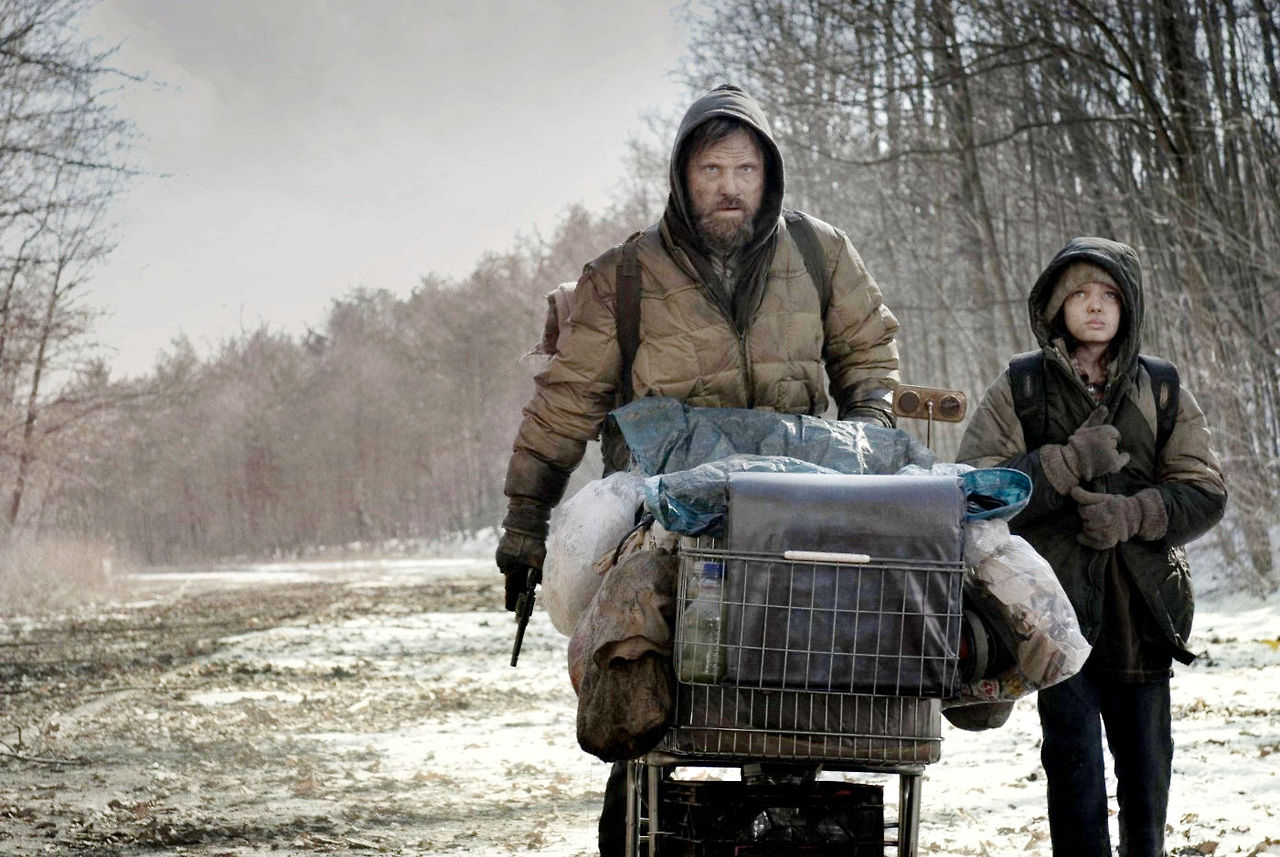
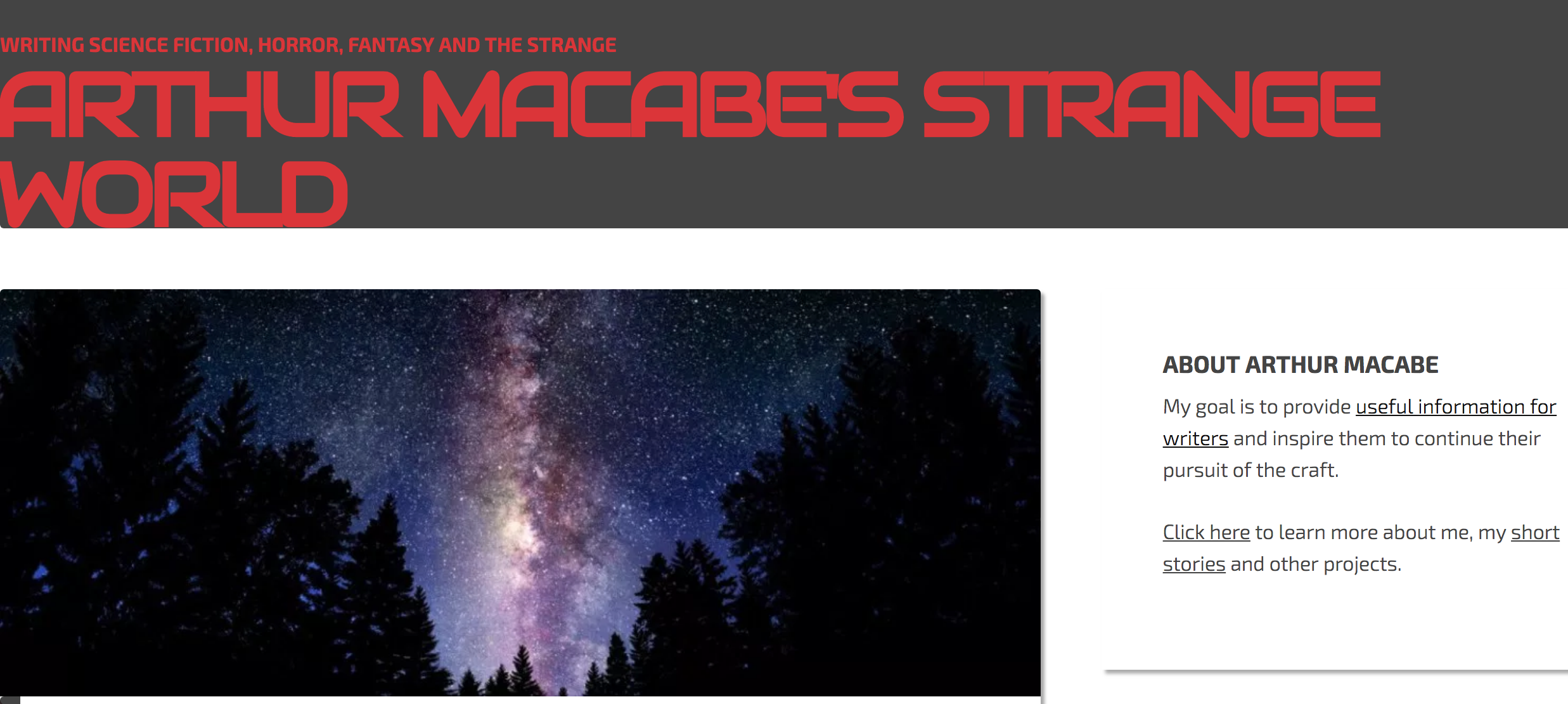

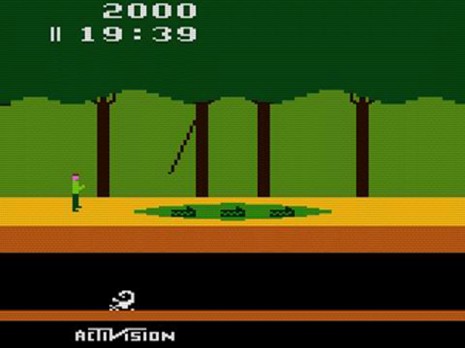

 Back in my early 20’s, right around the time I got married, I bought a copy of Stephen King’s semi-autobiographical craft book
Back in my early 20’s, right around the time I got married, I bought a copy of Stephen King’s semi-autobiographical craft book 


 A lot of folks look at Everest and wonder why anyone in their right mind would ever be tempted to try climbing it. Others can understand the desire but say up front that there’s no way they’re ever going to do it. Then there are the people ambitious enough to try. Aspiring novelists are like those people.
A lot of folks look at Everest and wonder why anyone in their right mind would ever be tempted to try climbing it. Others can understand the desire but say up front that there’s no way they’re ever going to do it. Then there are the people ambitious enough to try. Aspiring novelists are like those people. High altitude climbers trekking up the face of Everest get to the top one step at a time. Writers get to the end of their novels one word/sentence/paragraph/page at a time.
High altitude climbers trekking up the face of Everest get to the top one step at a time. Writers get to the end of their novels one word/sentence/paragraph/page at a time. Did you write every day for a solid week? Awesome. Give yourself a pat on the back, crack open a beer (or a high end ginger ale in my case), take a moment to breathe, then push ahead.
Did you write every day for a solid week? Awesome. Give yourself a pat on the back, crack open a beer (or a high end ginger ale in my case), take a moment to breathe, then push ahead. If you do successfully summit that manuscript, be sure to photodocument the moment, because whether or not your story ever lands on an indie bookshelf in hardback, you’ve accomplished something truly spectacular.
If you do successfully summit that manuscript, be sure to photodocument the moment, because whether or not your story ever lands on an indie bookshelf in hardback, you’ve accomplished something truly spectacular.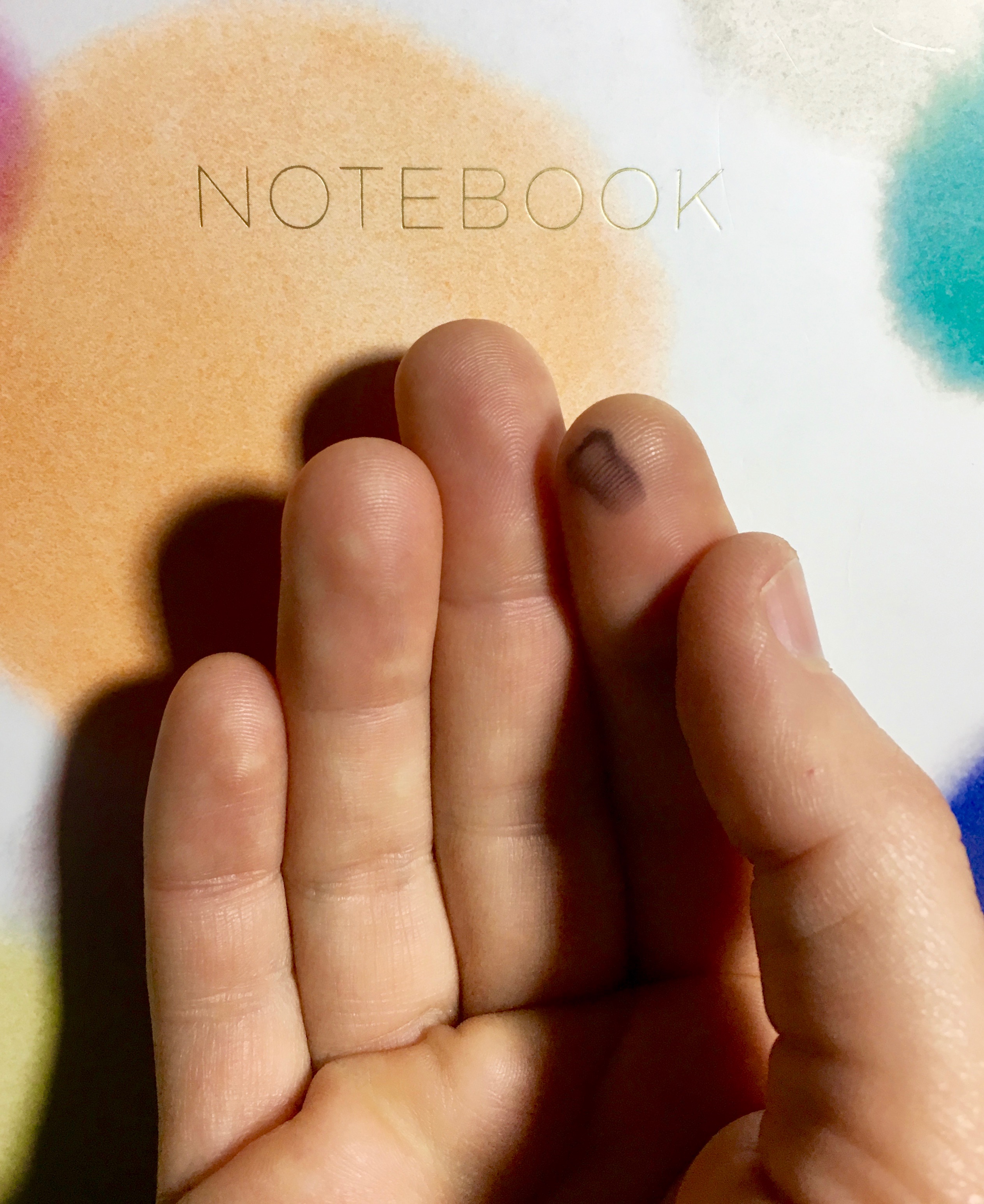
 Let’s start with my stack of five beautiful notebooks, most still empty, that I’ve collected over the course of this past year. Don’t roll your eyes at me. Five is a fantastic example of self-restraint, people! I could easily have bought so many more.
Let’s start with my stack of five beautiful notebooks, most still empty, that I’ve collected over the course of this past year. Don’t roll your eyes at me. Five is a fantastic example of self-restraint, people! I could easily have bought so many more. I doubt there’s a writer alive who doesn’t understand my love affair with notebooks. I mean, I can’t go into a store and not wander until I find the office supply aisle so I can check to make sure they don’t have a fabulous notebook that must be rescued and taken home. And if it’s an office supply store? Forget about it.
I doubt there’s a writer alive who doesn’t understand my love affair with notebooks. I mean, I can’t go into a store and not wander until I find the office supply aisle so I can check to make sure they don’t have a fabulous notebook that must be rescued and taken home. And if it’s an office supply store? Forget about it.
